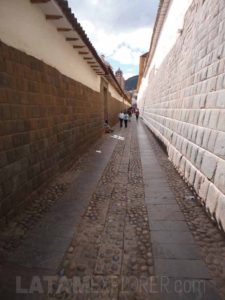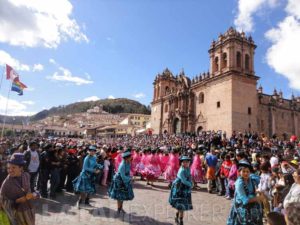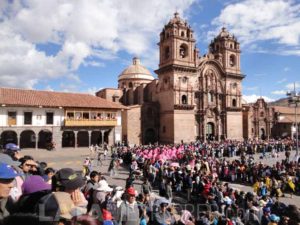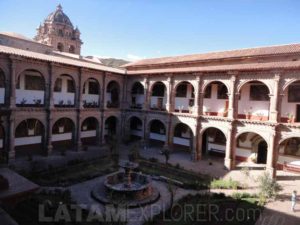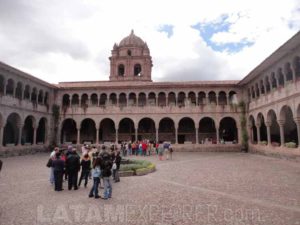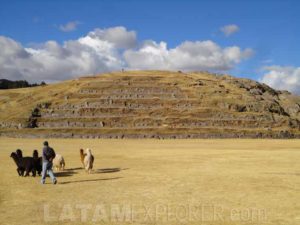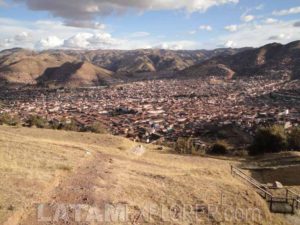Home > Destinations > Peru > Cusco
Cusco, Peru
Cusco (or Cuzco) is the ancient capital of the Inca Empire and one of the most visited cities of Peru. With an estimated population of about 440,000 inhabitants, Cusco is located 3,400 meters (11,150 feet) above the sea level in the southern region of the country. It is served by an international airport located just 5km (3mi) off the central square of the city, connecting it to destinations in some of the neighboring countries, besides several Peruvian cities, including as many as 30+ daily flights to the capital, Lima.
It is believed that the first human occupation of the Cusco region occurred about 3,000 years ago. Around 900 AD, the Killke culture has flourished in the region. At the beginning of the thirteenth century, perhaps originating from the vicinity of Lake Titicaca, where the Tiwanakus were already collapsing, Manco Capac (the first Inca) would have possibly established the seat of his new empire in Cusco. It was Pachacutec, however, who was theoretically the ninth Inca (but the first one whose historical existence is not discussed), who turned the city into a strong political and spiritual center during the mid-fifteenth century. Pachacutec and his successor, Inca Tupac Yupanqui, expanded the empire’s domain occupying much of the Andean region between Quito, in present day Ecuador, and the Maule River, in south-central Chile, integrating a territorial extension over 5,000 km (3,000mi) long. The arrival of Spanish colonizers, in 1533, extinguished the Inca civilization in just a few years and transformed the city of Cusco into an important trading center on the route between Lima and the Spanish domains in current Bolivia and Argentina.
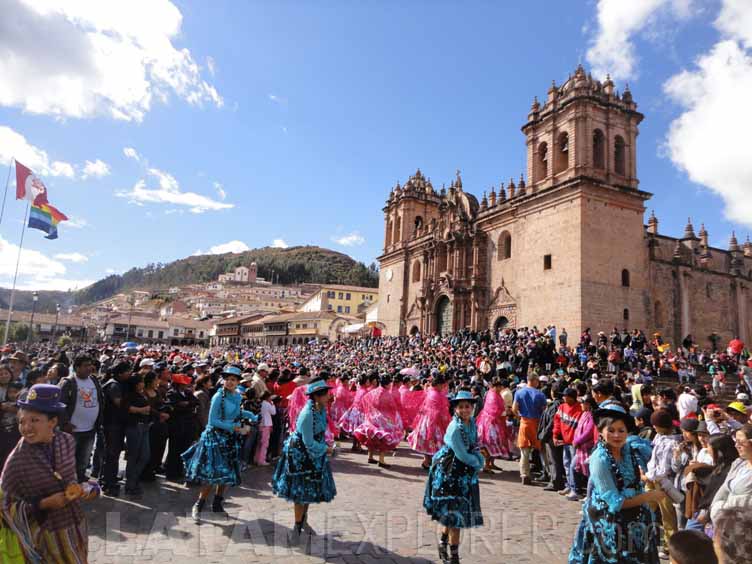
The center of Cusco preserves many buildings, streets and squares whose origins date back to pre-Columbian times, usually modified or adapted during the colonial period. For this reason, the area was declared a UNESCO World Heritage site back in 1983. Its Plaza de Armas, in the heart of the city, saw numerous events of historical significance such as the speech of Francisco Pizarro when he took control over the city and the execution of Túpac Amaru II, the indigenous leader of the resistance, in 1781. The Santo Domingo Cathedral, at the Plaza de Armas, was built in 1539 over the Inca Viracocha's Palace foundations. Similarly, the Church of the Society of Jesus, now considered one of the best examples of the colonial baroque in the Americas, was built on the foundations of the Inca Wayna Qhapaq’s Palace, also at the Plaza de Armas. The Temple and Monastery of la Merced, a few steps from the square, is also worth a visit as it houses, among other relics, a 22kg (48lb) monstrance made of gold and precious stones.
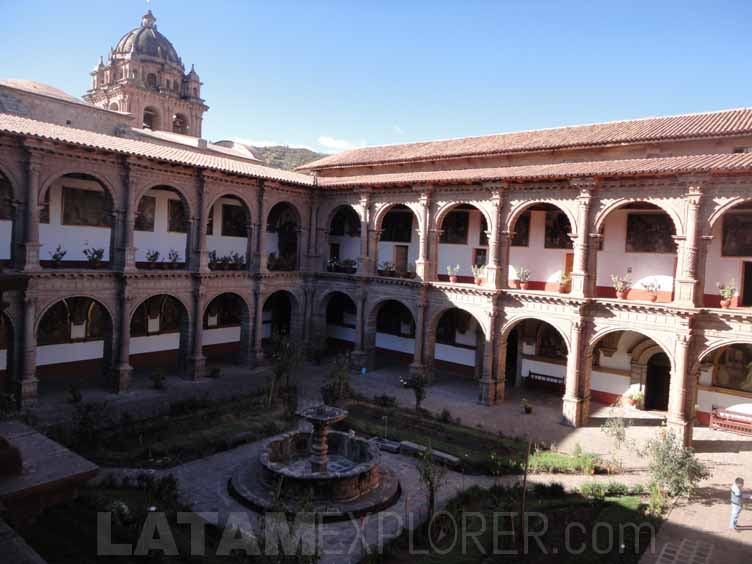
The downtown area also houses the Convent of Santo Domingo, on the premises of the former Qorikancha, or Golden Palace. This was the most important shrine dedicated to the Sun God at the time of the Inca Empire. The original palace would have, at the time of the Spanish arrival, housed a large solid gold disc representing the Sun God, adorned by precious stones. Its gardens would be been decorated by golden plants, decorated in gold and silver, and adorned by 20 life size sculptures of llamas made in solid gold. Nowadays, reports about all these marvels can only be found in chronicles of the past, since the temple was completely stripped of all its wealth by the conquerors, who built the Church of Santo Domingo (not to be confused with the cathedral in honor of the same saint) where the palace stood. Still, this remains one of the main tourist attractions of Cusco, once the structure of the lower part of the temple is preserved.

Still inside Cusco, it is possible to go on a tour visiting four important archaeological ruins dating from the Inca period. The closest to the city center, only 1.5km (1mi) away from the main square through a steep climb is called Saqsaywaman and is located 3,700m (12,140ft) high. This was a fortress built by the Killke culture around the year 1100 AD and expanded by the Incas after the thirteenth century. The archaeological site of Qenko, 6km (3.7mi) away from Cusco, at 3,580m (11,750ft), has a semicircular amphitheater, whose original use is unknown, and several underground galleries. Puka Pukara is the third archaeological site of the path; this is an important set of military ruins that formed the Cusco defense system, including walls and stairwells. Finally, Tambomachay is the farthest ruin, located about 8km (5mi) from the city center, at an elevation of almost 3,800m (12,500ft). It is believed that the site was used for the worship of water, consisting of a set of aqueducts and small fonts that make water pour over the walls of the building.
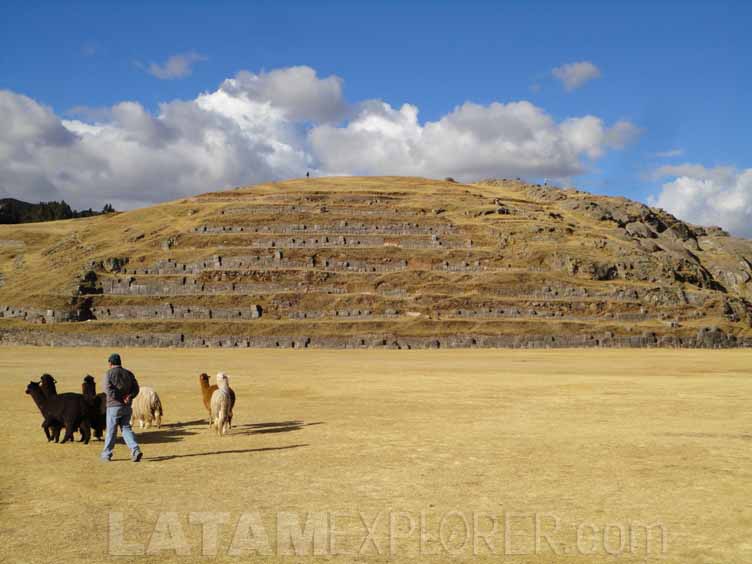
Cusco is also the main base for exploring the Sacred Valley of the Incas, which includes destinations like Pisac, Ollantaytambo, Moray and the salt mines of Maras. Besides, this is the base where most of the groups who wish to complete the Inca Trail or the Salkantay Trail meet and is, of course, a key point in the route of those wishing to visit Machu Picchu.
